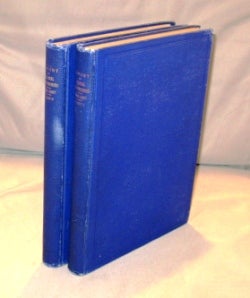
The Fur Seals and Fur-Seal Islands (Pribilof Islands) of the North Pacific Ocean. Two Volumes.
Washington DC: Government Printing Office, 1898. First Printing of the First Edition. Both volumes are in Very Good plus condition bound in blue cloth. Northern fur seals have been a staple food of native northeast Asian and Alaskan Inuit peoples for thousands of years. The arrival of Europeans to Kamchatka and Alaska in the 17th and 18th centuries, first from Russia and later from North America, was followed by a highly extractive commercial fur trade. The commercial fur trade was accelerated in 1786, when Gavriil Pribylov discovered St. George Island, a key rookery of the seals. An estimated 2.5 million seals were killed from 1786 to 1867. This trade led to a decline in fur seal numbers. Restrictions were first placed on fur seal harvest on the Pribilof Islands by the Russians in 1834. Shortly after the United States purchased Alaska from Russia in 1867, the U.S. Treasury was authorized to lease sealing privileges on the Pribilofs, which were granted somewhat liberally to the Alaska Commercial Company. From 1870 to 1909, pelagic sealing proceeded to take a significant toll on the fur seal population, such that the Pribilof population, historically numbering on the order of millions of individuals, reached a low of 216,000 animals in 1912. Part One concerns: The History, Condition, and Needs of the Herd of Fur Seals Resorting to the Pribilof Islands; Part Two addresses: Observations on the Fur Seals of the Pribilof Islands 1872-1897 as extracted from the log of St. Paul Island, and as recorded in the daily journal of the commission of 1896 and 1897. Both volumes 606 pages. Numerous photographs and illustrations. Fully indexed. Item #23929
Price: $275.00

